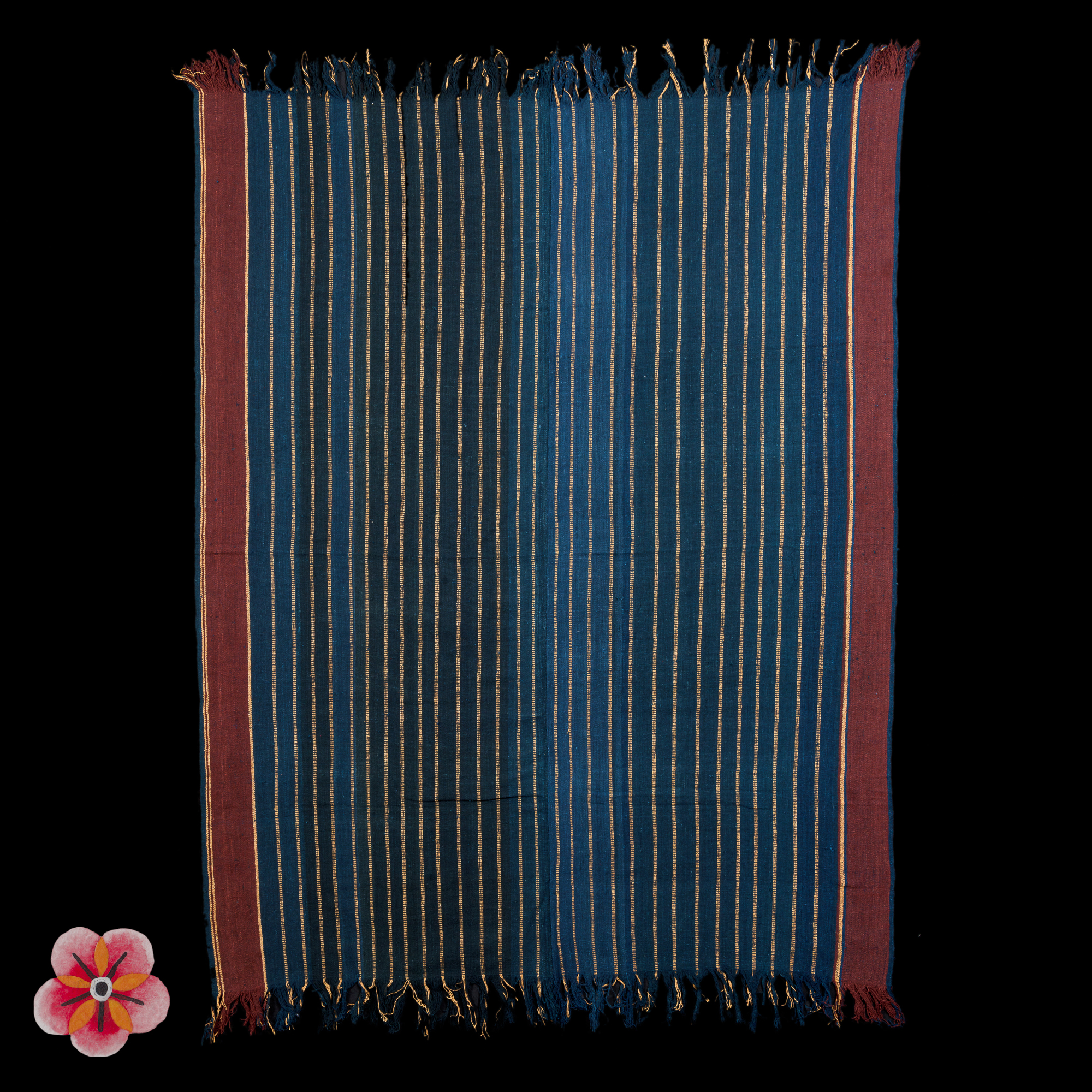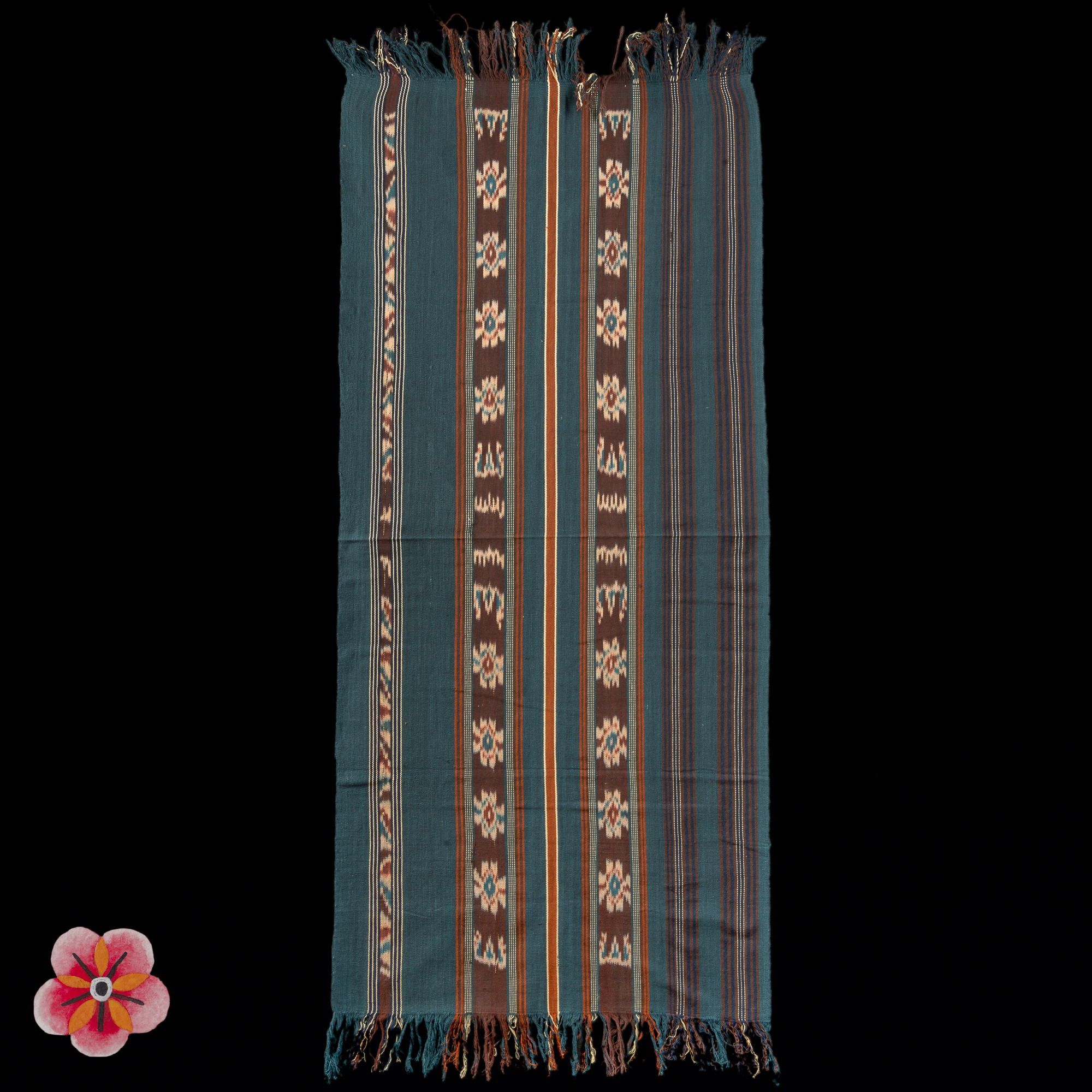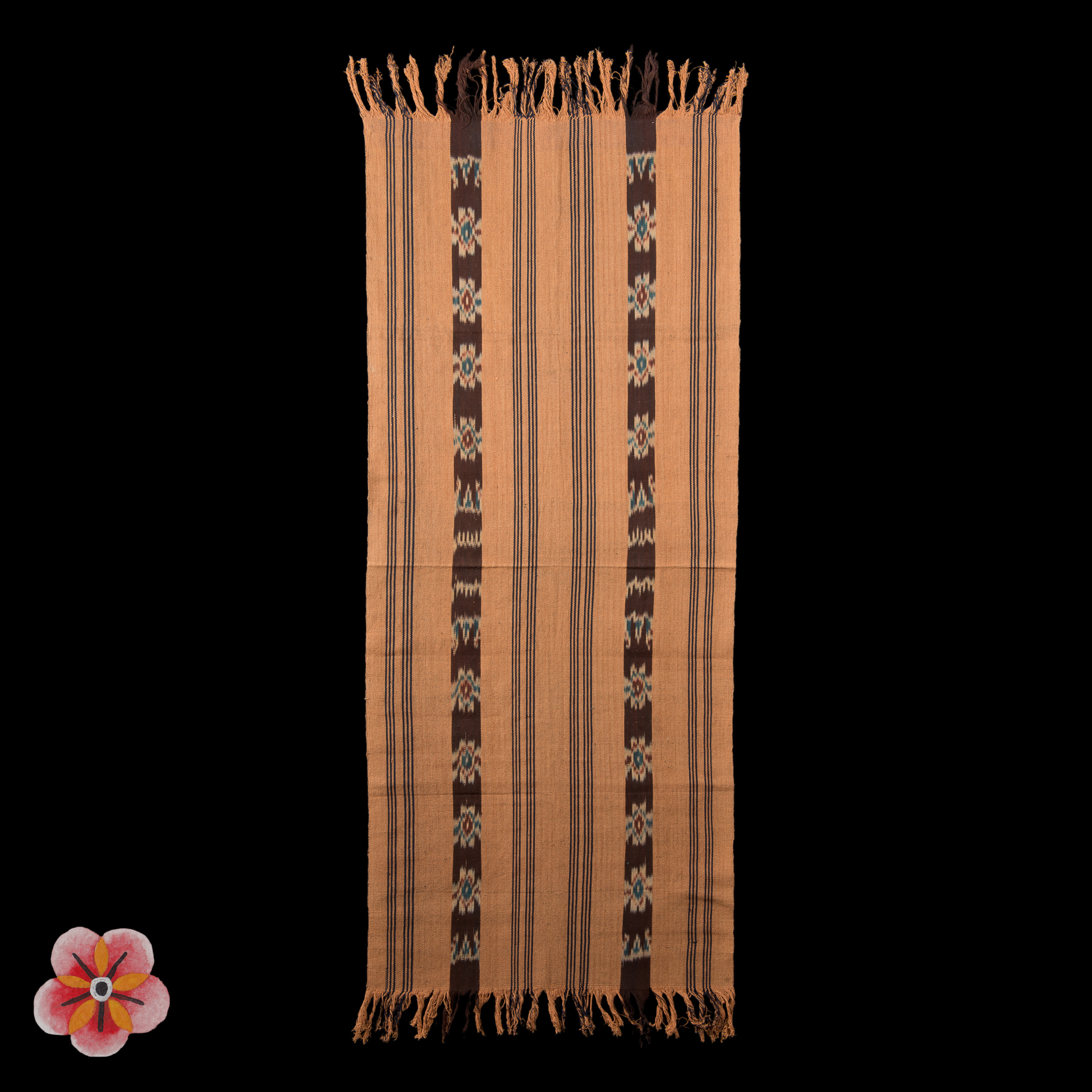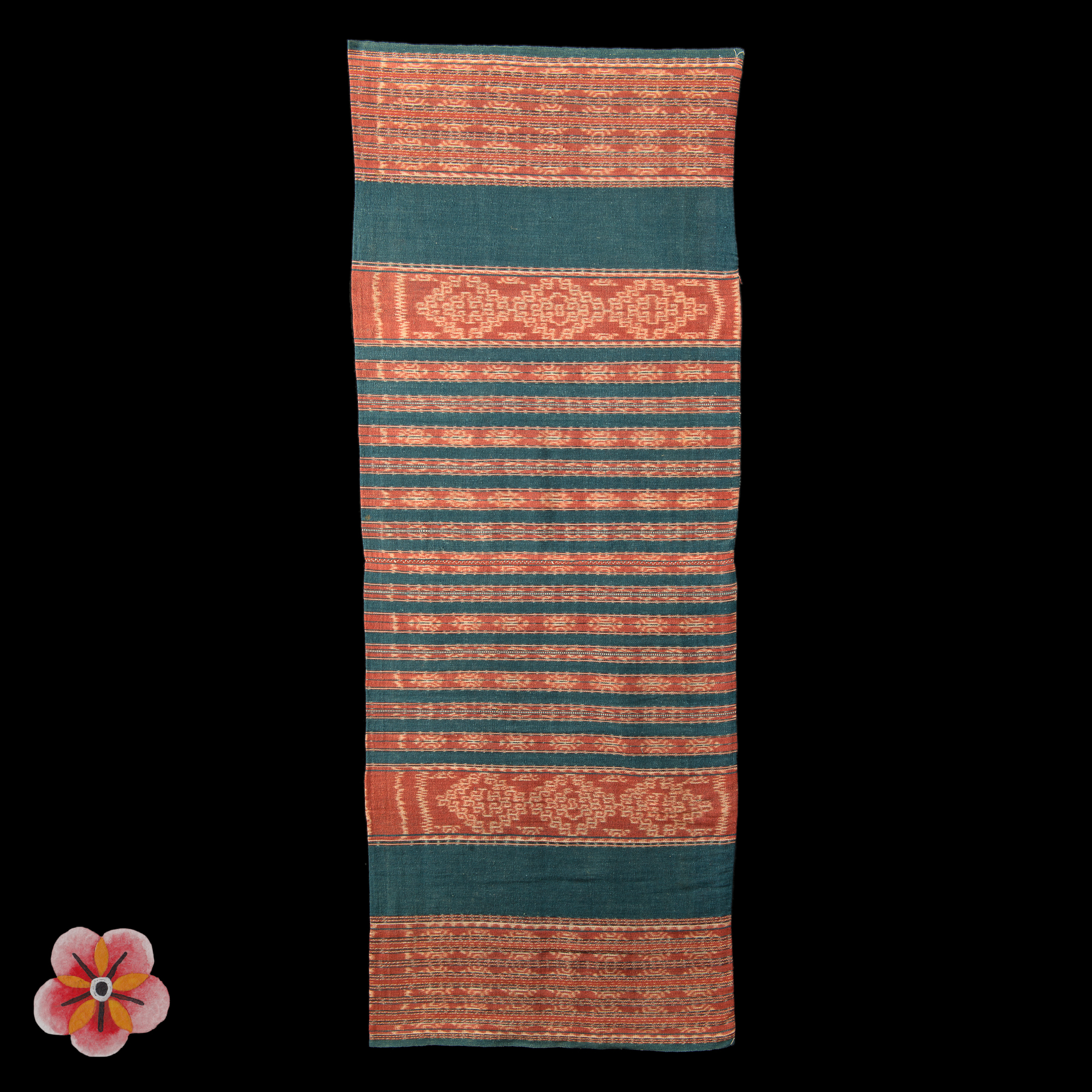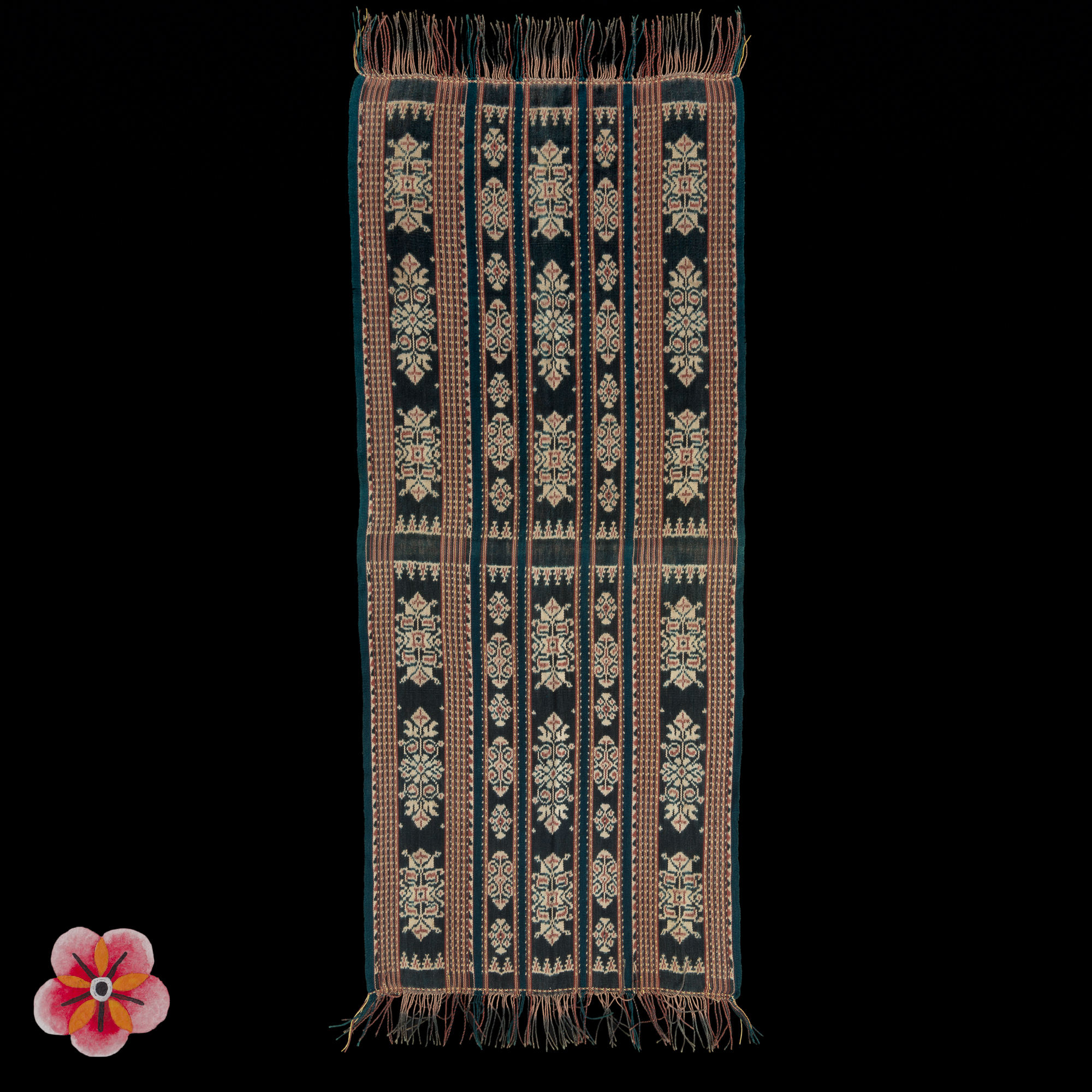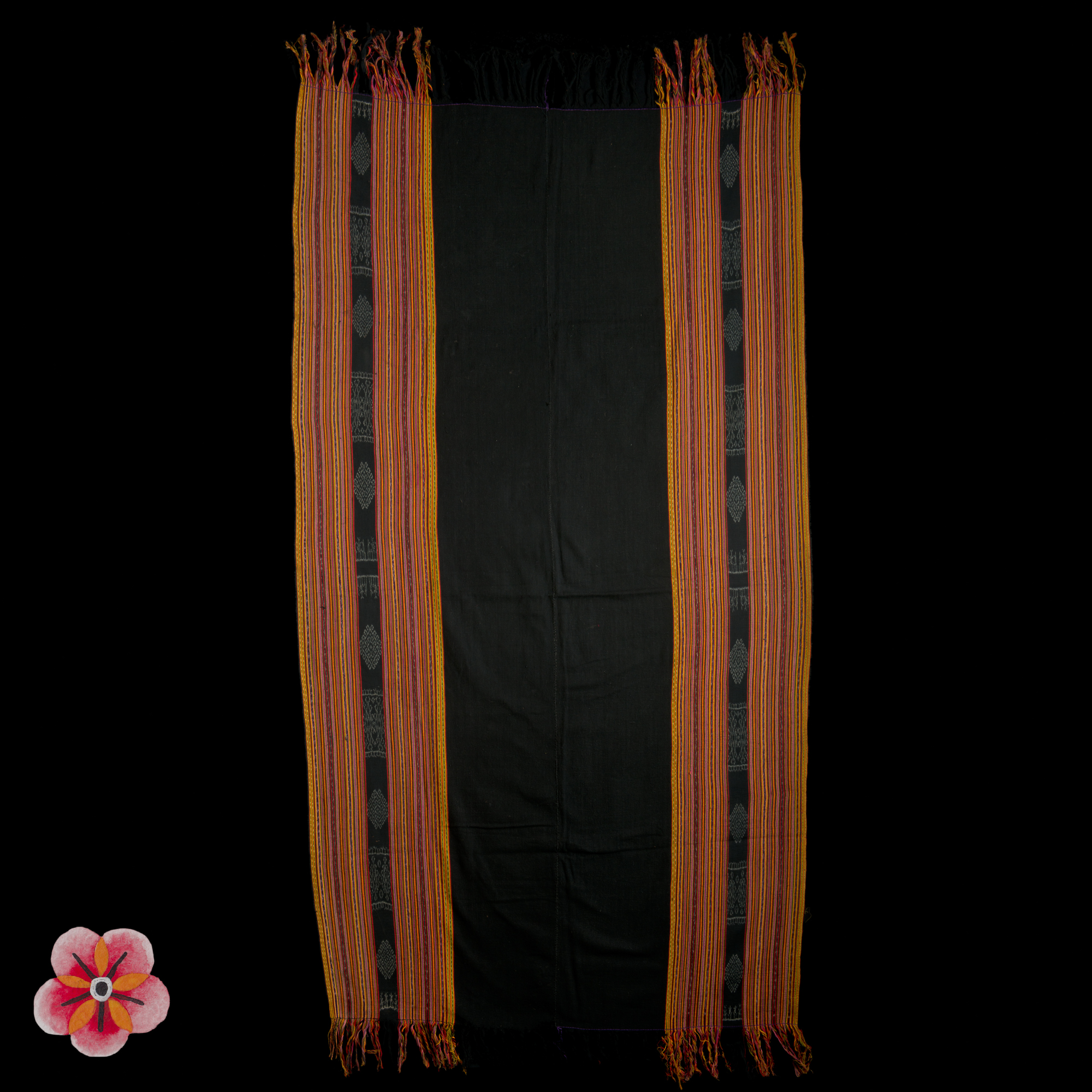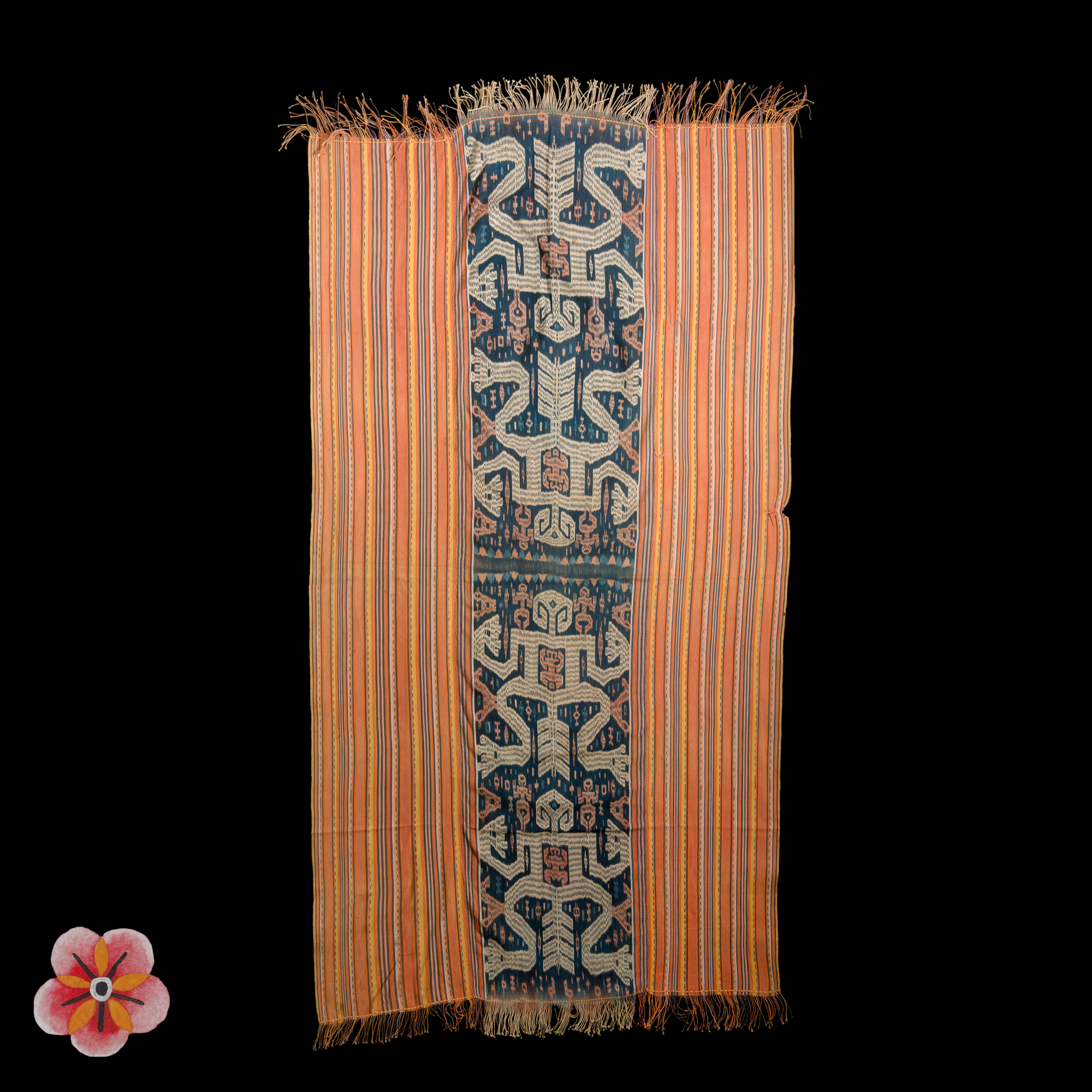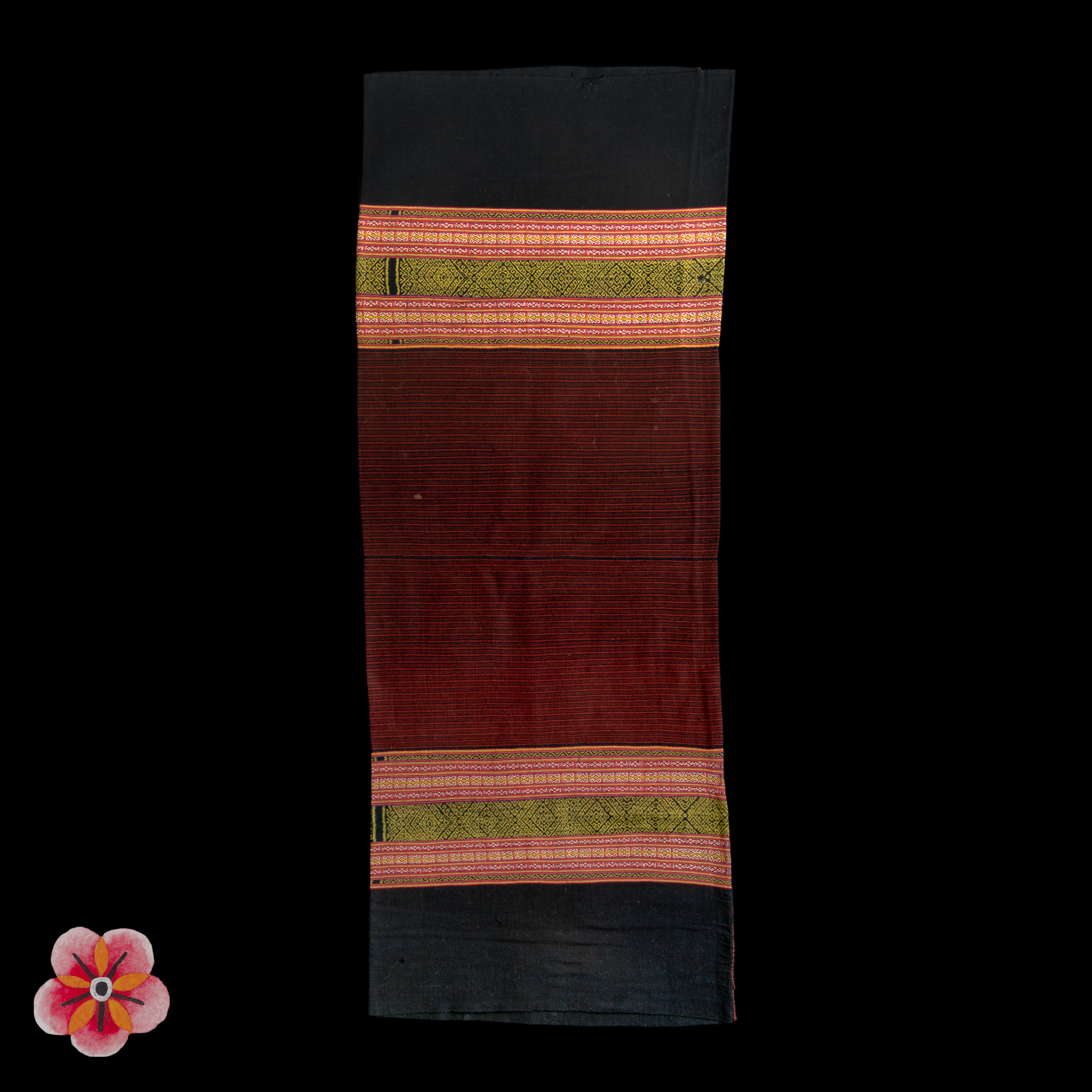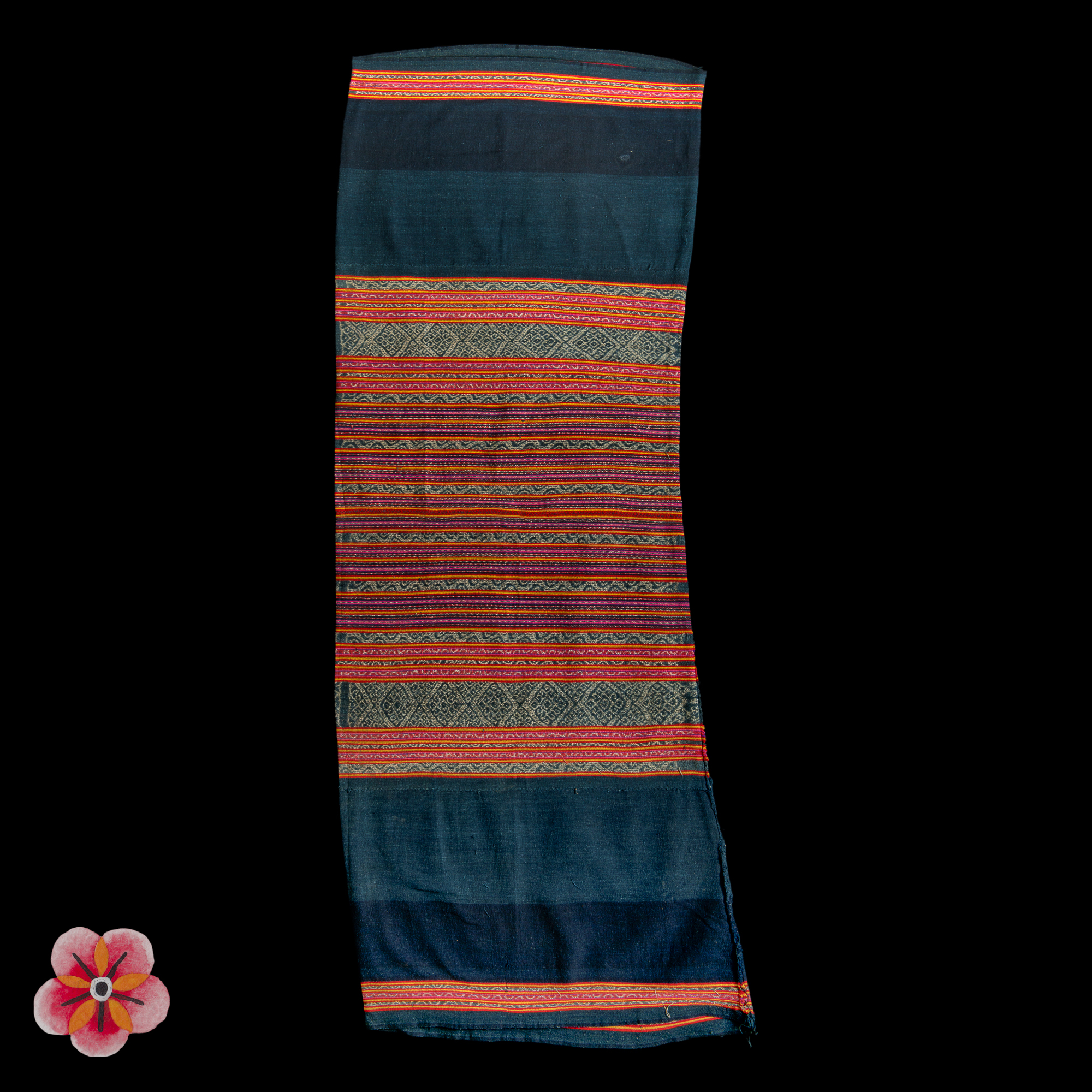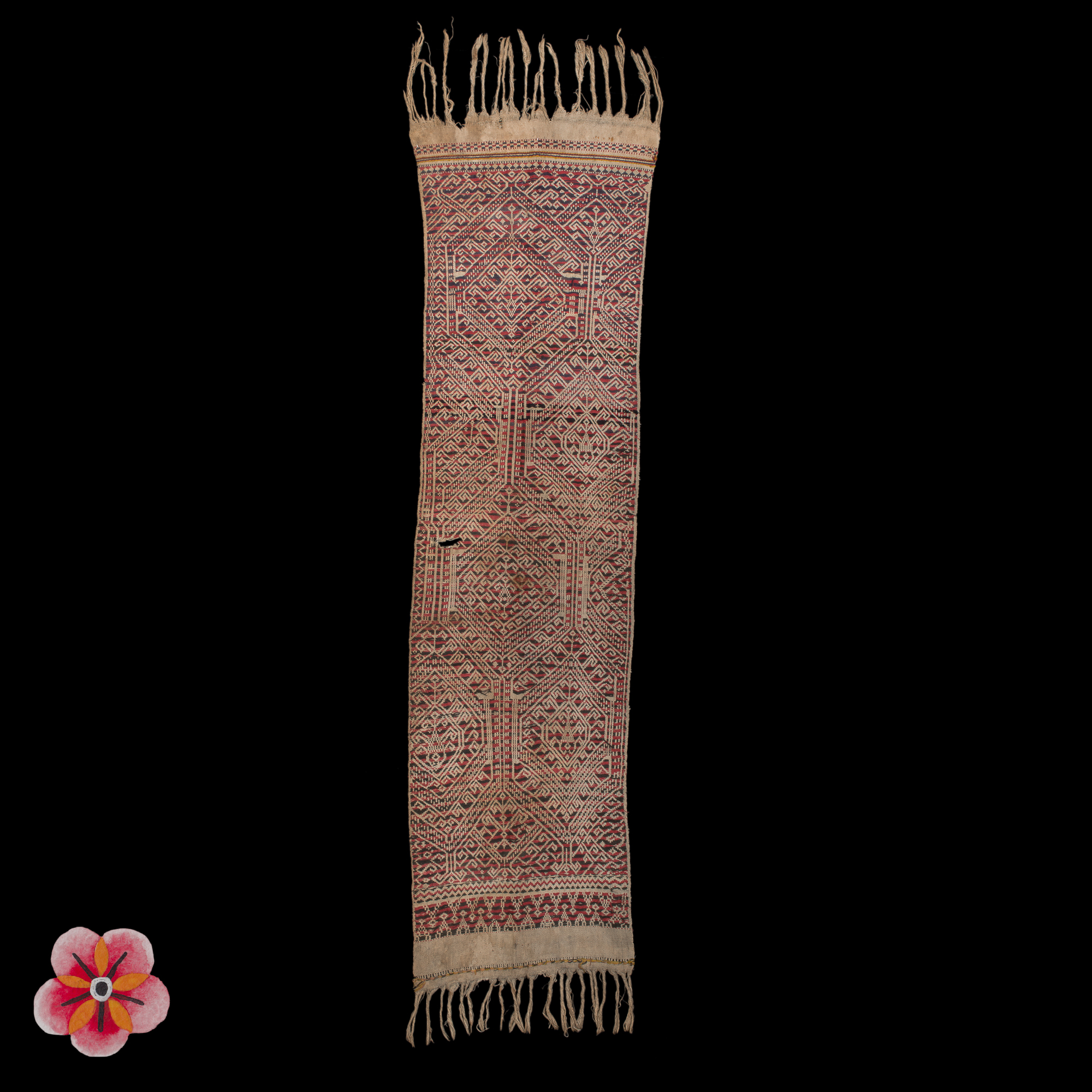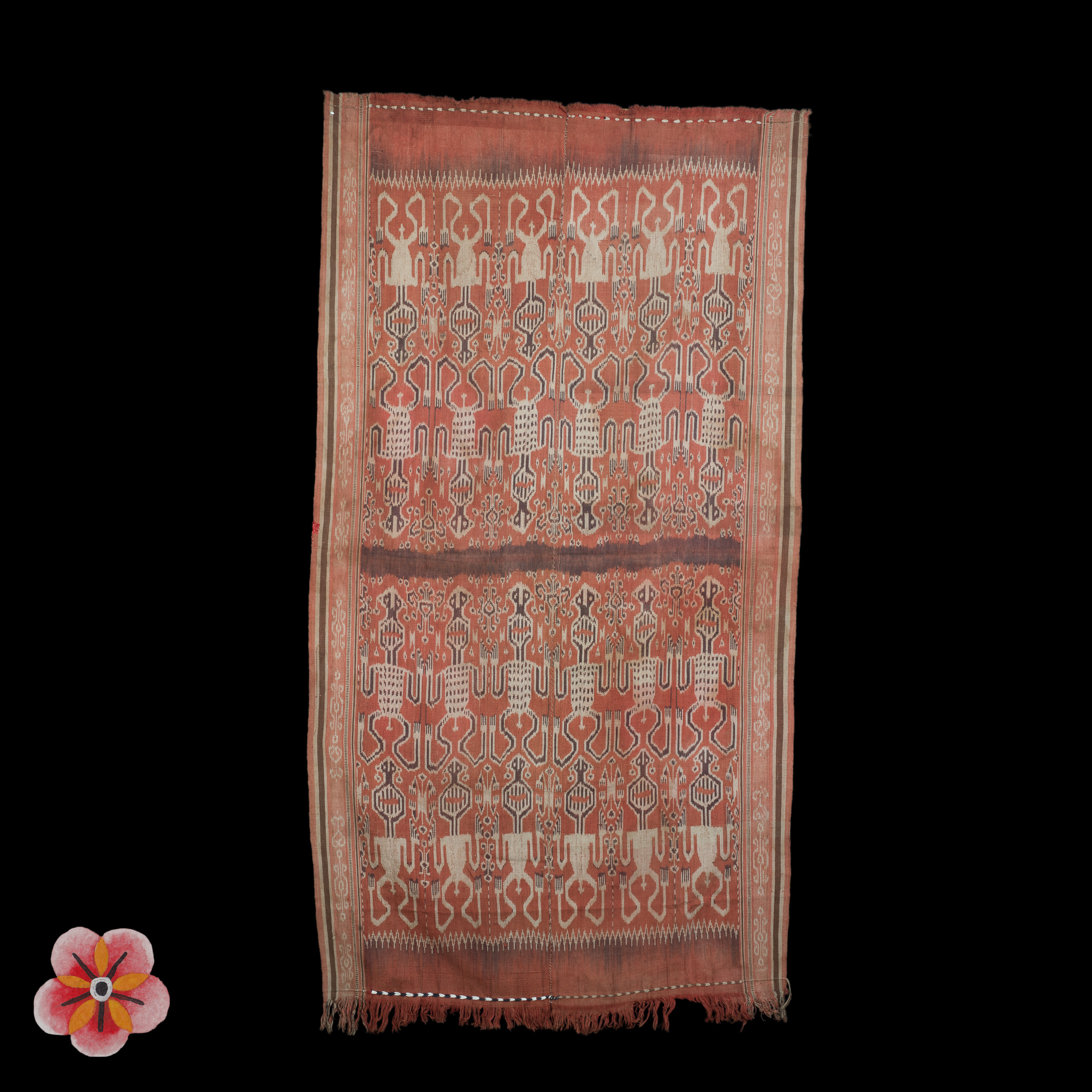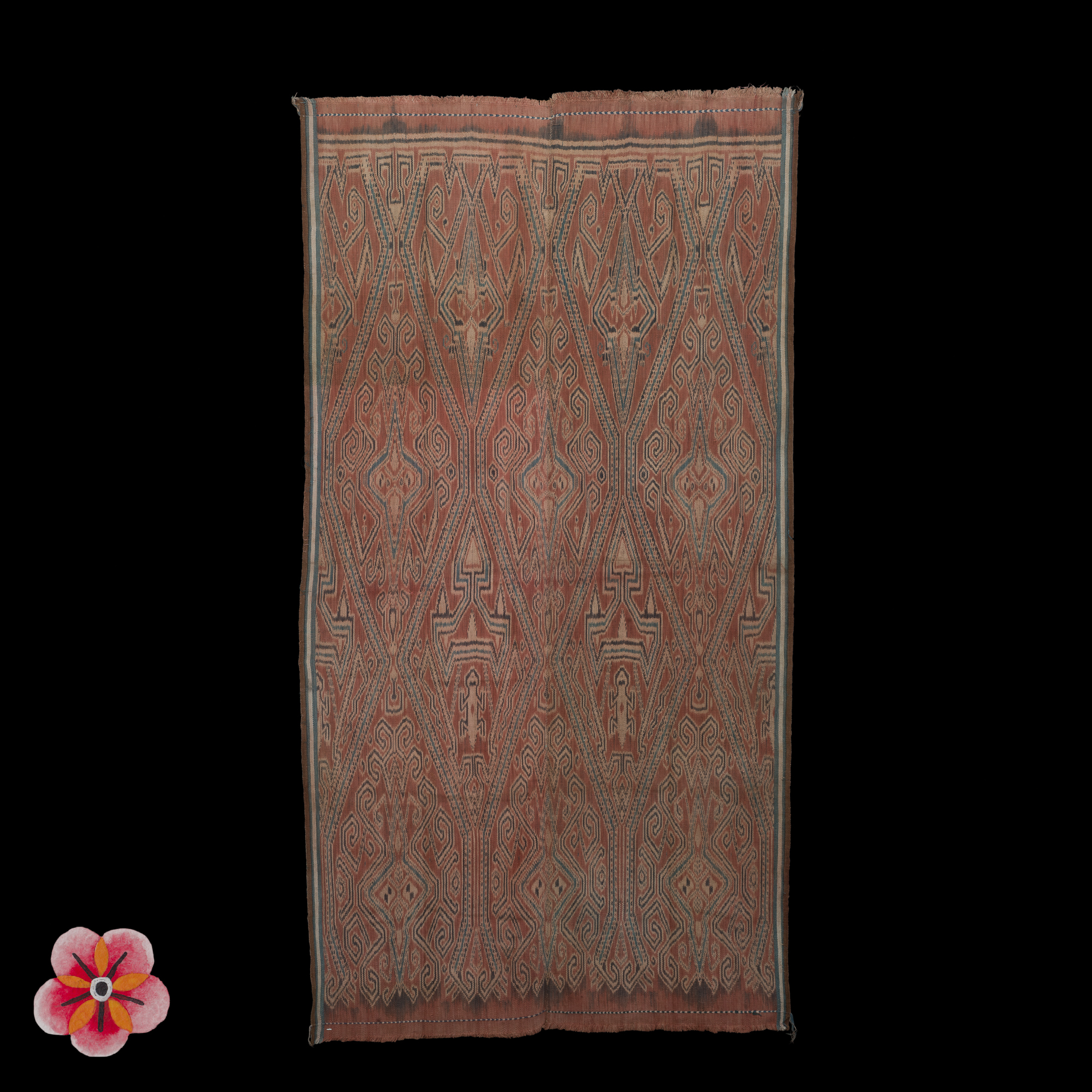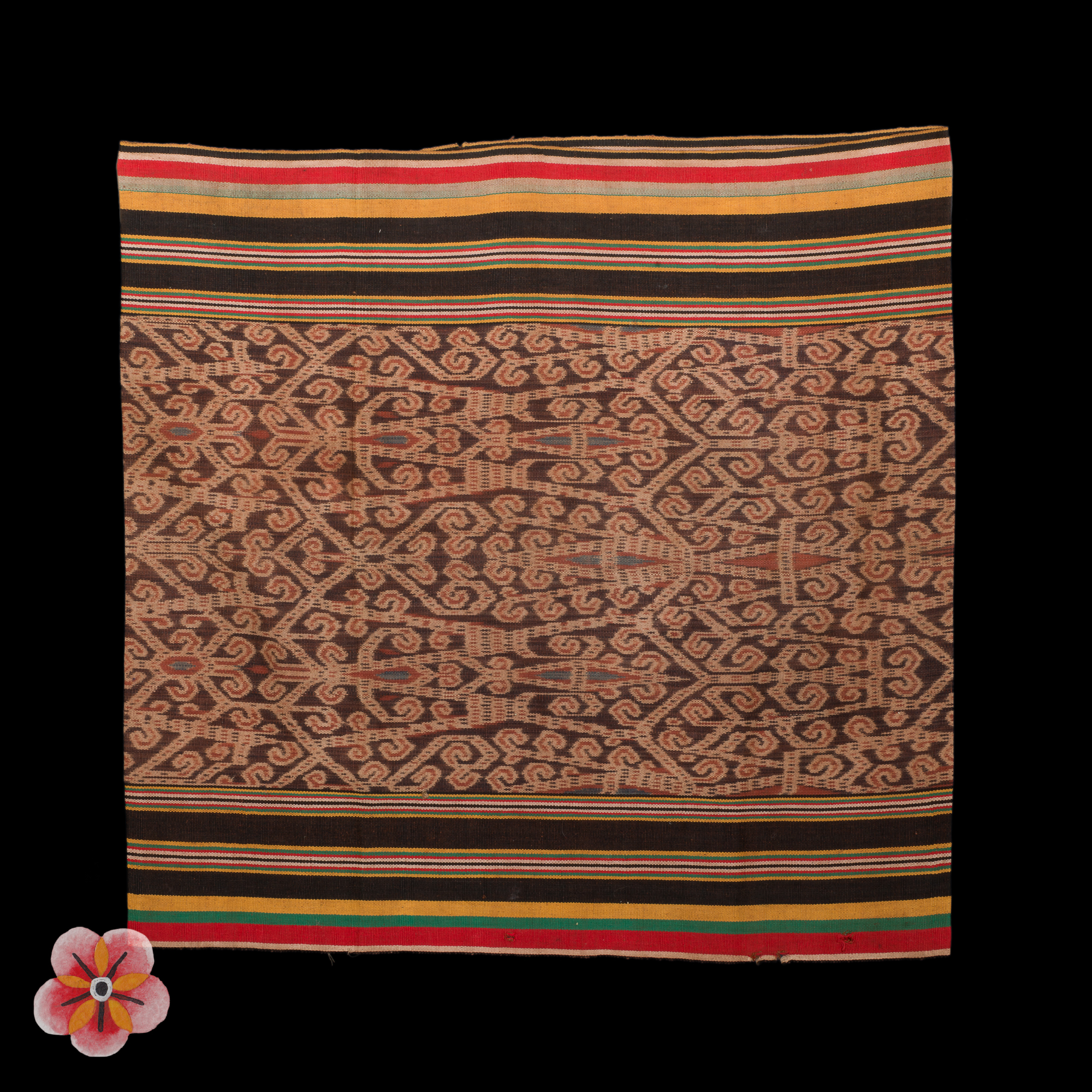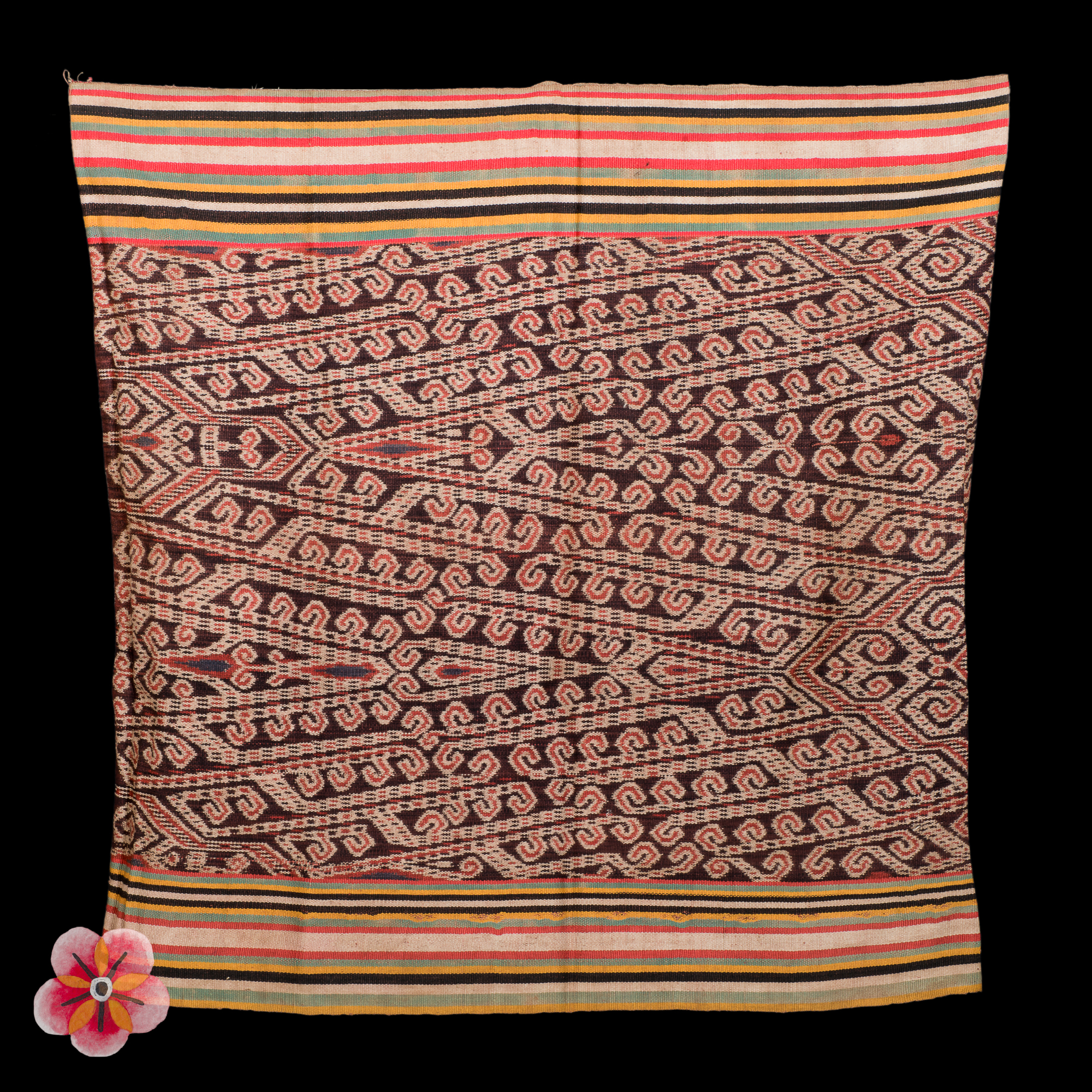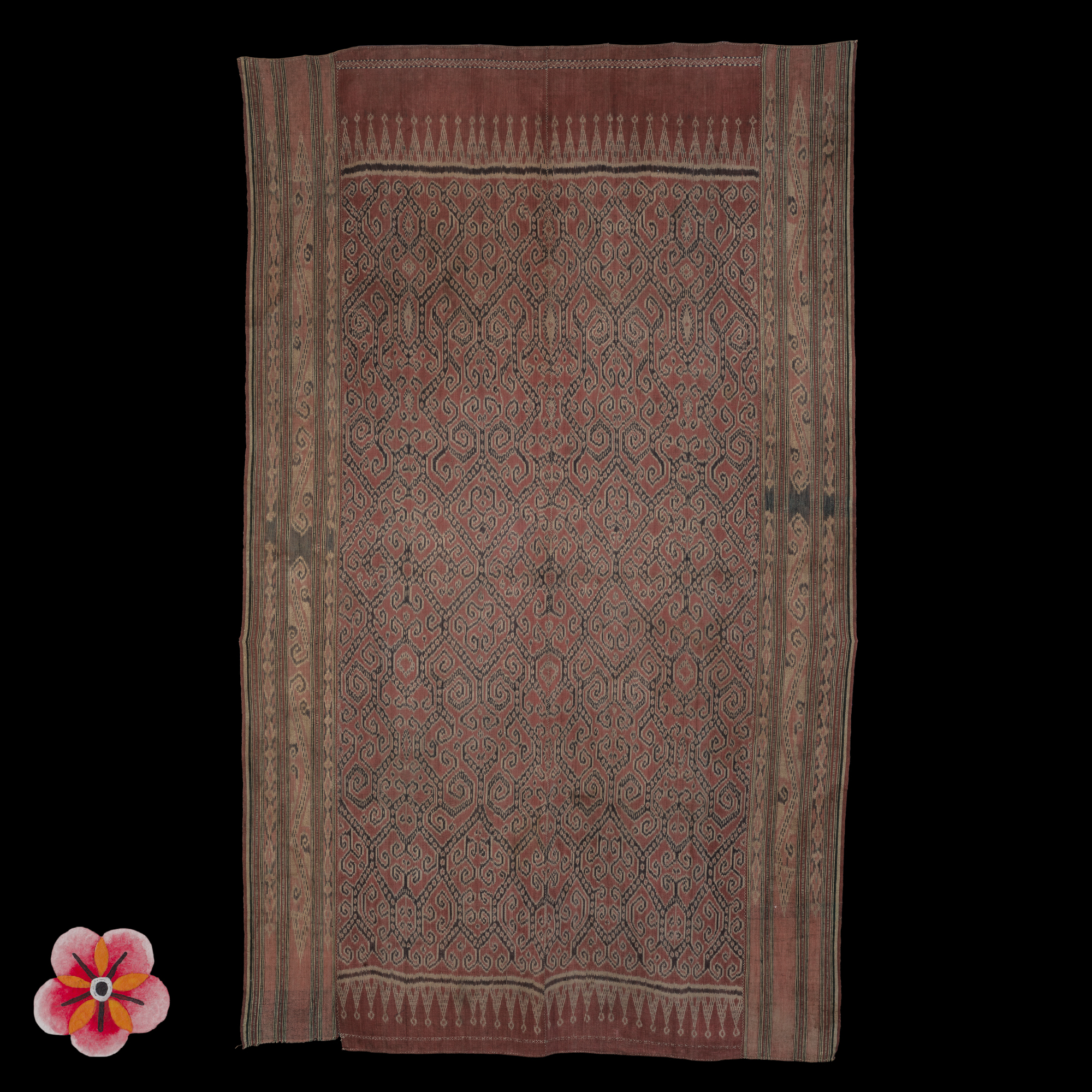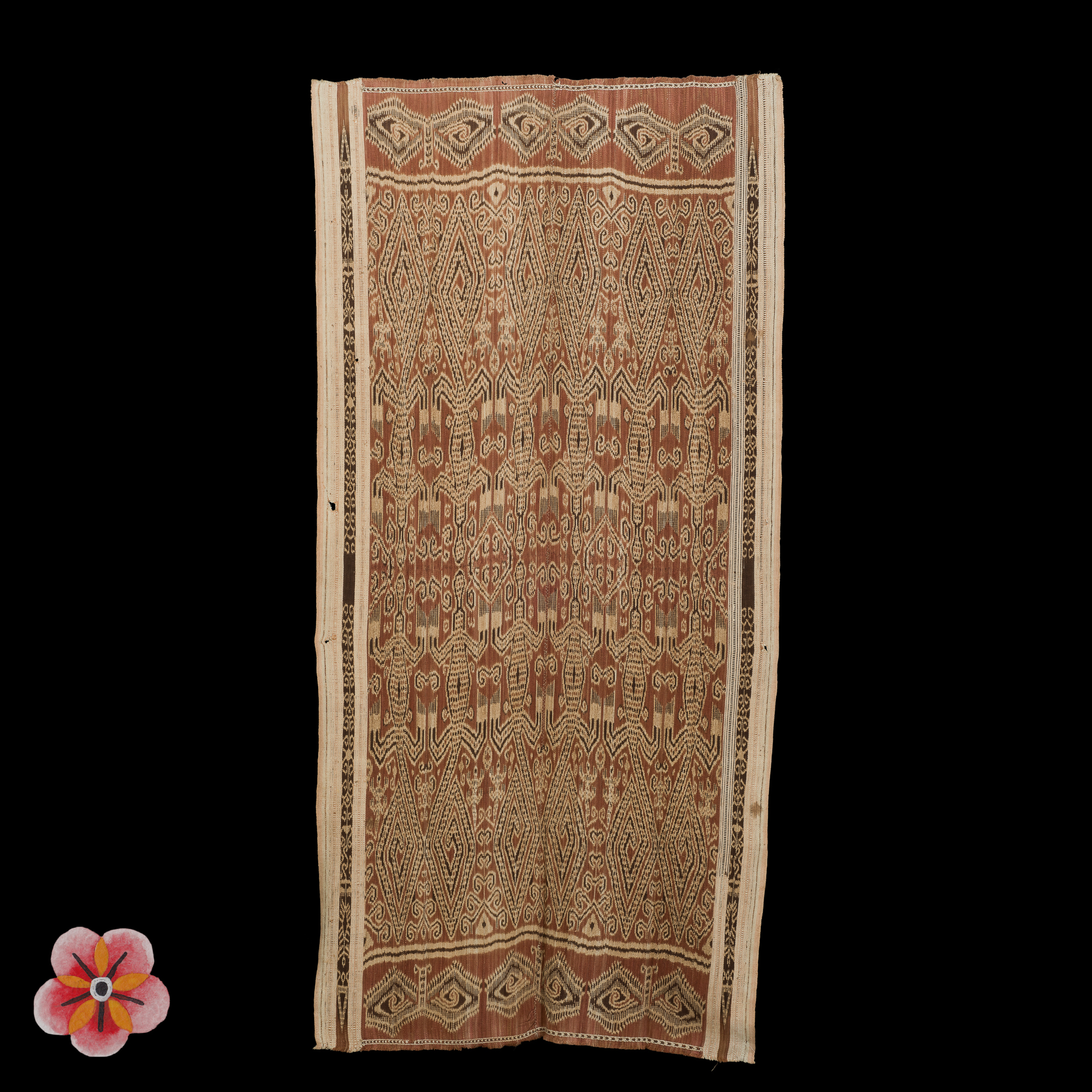This exquisite Pua’ Kumbu’ ceremonial blanket offers a profound glimpse into the spiritual traditions and cultural heritage of the Iban Dayak people in West Borneo. Measuring 150 × 250 cm, the hand-spun cotton textile is adorned with natural dyes, creating a magnificent display of decorative motifs that hold immense symbolic power.
Acquired directly in Borneo during the 1970s by a Swiss trotter from Basel, this Pua’ Kumbu’ carries with it the essence of the Iban Dayak community—an embodiment of their spiritual beliefs and artistic expressions.
As one of the most powerful Iban textiles, locally known as "rang jugah," this ceremonial blanket is revered for the profound meanings represented in its decorative motifs. Pua’s are considered the most important of Iban textile productions, serving as potent mediums connecting humanity with the divine.
In Iban traditions, individuals would sleep wrapped in a Pua’ before embarking on important exploits, seeking revelatory dreams that guide their path. In ceremonial contexts, Pua’s are used to construct altars representing the tree of life, while also acting as markers to delimit ritual spaces and providing protection to participants. Additionally, they act as mediums between the community and the divine, fostering a sacred connection during important rituals.
This exceptional Pua’ Kumbu’, registered in the book "Dayak: The Art of Borneo's Head-hunters" and published in "Iban Art" (p. 74), stands as a cherished artifact that reflects the Iban Dayak's reverence for their cultural traditions and spiritual beliefs.
Having been exhibited in a Museum in Switzerland in 2019, this Pua’ Kumbu’ is in excellent condition, preserving its timeless beauty and cultural significance.
Offered from a private collection with inventory number HE.314, this ceremonial blanket is a rare and invaluable piece, inviting its owner to embrace the spiritual essence and artistic brilliance of the Iban Dayak people.
Owning this Pua’ Kumbu’ is an opportunity to connect with the ancient wisdom and profound spirituality of the Iban Dayak community, celebrating the intricate weavings and sacred symbols that have shaped their identity and enriched their cultural heritage for generations.
